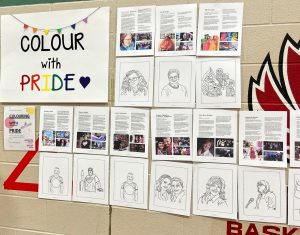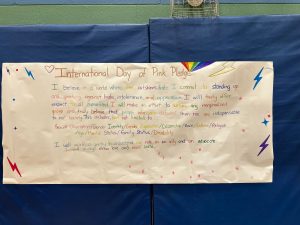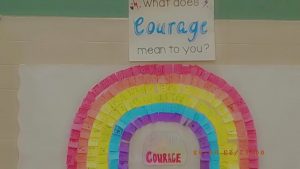There is no doubt that I am very passionate about addressing issues related to equity and social justice, especially any work related to anti-oppression, anti-racism, anti-sexism and anti-homophobia. For me to fully understand and advocate for social justice and equity, it is important that I am aware of current challenges, barriers and inclusionary practices. However, I would be the first to admit that my knowledge of gender neutral pronouns requires further learning and understanding to ensure I am respectfully honouring the identities of staff and students (in fact, all people) in my community. So, I did some research for my own professional growth and I found out some interesting facts that I would like to share with you.
It is understood that people who identify outside of a gender binary most often use nonbinary pronouns that are not gender specific. These include: they/them/their use in the singular form. However, I learned that there are other pronouns that are used, such as: ze (pronounced “zee”) in place of she/he and hir (pronounced “here”) in place of his/him/her. This was new learning for me that opened my eyes to the ways in which I address individuals and the assumptions I often make about their identities.
Assuming one’s identity and choice of pronouns based on how they look and/or how they dress can be false and disrespectful to one’s gender identity and gender expression. I learned that pronouns may or may not match one’s gender expression, such as how the person dresses, looks, behaves or what their name is.
In recognition and commitment to equity and inclusionary practices, as well as the Human Rights policies in Canada, it is encouraging to see more people, including workplaces and organizations, supporting individual’s use of self-identified pronouns, in place of assumed pronouns based one’s sex assigned at birth or other’s perceptions of physical appearance. It might seem a simple gesture to some, but it’s an important recognition for others. It’s about letting someone know that you accept their identity as they are.
The response to the following questions might help you better understand gender pronouns and how you can affirm someone’s gender identity:
What’s the right way to find out a person’s pronouns?
If I was introducing myself to someone new, I would say, “Hi. My name is Gary. I use he/him pronouns. What about you?” However, do keep in mind that for many people who don’t identify as cisgender, it could be more difficult for them to share their pronouns, especially in spaces where they don’t know people and/or they don’t feel comfortable or accepted.
How is “they/them” used as a singular pronoun?
“They” is already commonly used as a singular pronoun when you are talking about someone and you don’t know who they are. Using they/them pronouns for someone you do know simply represents a slightly different way of thinking. In this case, you’re asking someone to not act as if they don’t know you, but to use non-binary vocabulary when they’re communicating with/about you.
What if I make a mistake and ‘misgender’ someone, or use the wrong words?
I would simply apologize for my error. It’s perfectly natural to not know the right words to use, especially when meeting someone for the first time. Consider addressing groups of people as “everyone”, “colleagues”, “friends”, “class” or “students” instead of “boys and girls.” The important thing is making that non-assuming connection with the person and being open to learning new things and new ways of understanding one’s identity.
What does it mean if a person uses the pronouns “he/they” or “she/they”?
That means that the person uses both pronouns, and you can alternate between those when referring to them. So, either pronoun would be fine. However, be mindful that some people don’t mind those pronouns being interchanged for them, but for others, they might use one specific pronoun in one context and another set of pronouns in another context/space, dependent on maybe safety or comfortability in the space they occupy. The best approach is to listen to how people refer to themselves.
ETFO has a wealth of resources to support your teaching and learning of gender neutral pronouns. I found their Social Justice website very helpful in my research and understanding of gender neutral pronouns. In fact, ETFO has plenty of ETFO 2SLGBTQ+ Resources for students of all ages.



